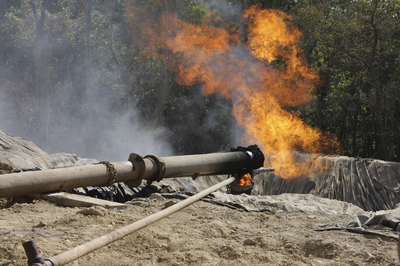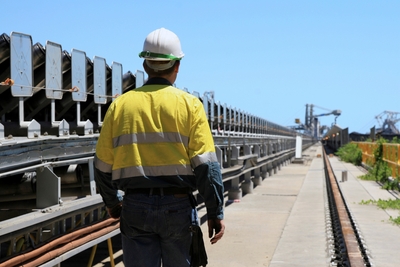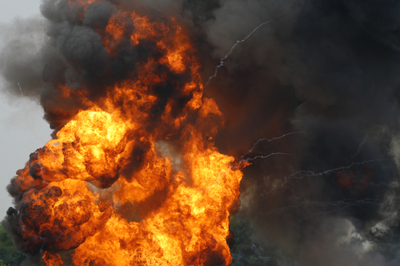Protecting mobile workers in the resource sector
By Ashley Marshall, Head of Network Solutions, Airwave Solutions Australia
Wednesday, 27 August, 2014
Digital private mobile radio (PMR) can enhance safety and efficiency for workers in the resources sector.
Explosions at oil and gas plants or mine sites and toxic gas leaks at petrochemical plants can cause widespread damage to equipment, lost revenue, environmental damage, brand damage and, in the worst cases, injuries among employees and in the neighbouring area. And there can be a considerable impact on the local communities both during and in the aftermath of an incident.
To prevent these incidents happening, the resources industry has some of the strictest regulations regarding fire, explosions and gas leaks. And yet the principle cause of most disasters and failures is human error or failing to intervene correctly when the first alarms are signalled. For instance, if pressure builds in a tank but human error leads to a failure to vent the tank, pressure can build further leading to a boiling liquid expanding vapour explosion (BLEVE). The catastrophic disaster on Piper Alpha in 1988 was exacerbated by human error - one shift did not communicate effectively with the next shift.
Human error has also been linked to incidents at ESSO’s natural gas plant explosion at Longford in Victoria’s Gippsland region, Flixborough (UK), Seveso (Italy) and Toulouse (France). Each time, new regulations are introduced to tighten up or create new safe processes.

Putting safety first
Digital private mobile radio (PMR) - such as TETRA (Terrestrial Trunked Radio) and APCO-25 (P25) - can significantly help the resources industry reduce human error, particularly at the intervention stage when it can have a dramatic impact on business activities and public and employee safety.
Its first role is in the early prevention or identification of faults. Modern oil refineries and petrochemical plants are awash with sensors and meters, measuring pressures, tank levels, emissions and so on. Digital PMR is the ideal solution for industrial telemetry: modules can wirelessly connect sensors to control rooms, with the robustness and reliability of a wired network. By using digital PMR, an operator can rapidly deploy new sensors without the need to provide new cabling. In hard-to-reach locations, this alone helps to reduce safety issues.
Digital PMR telemetry has already been used to monitor electricity grid infrastructure in Australia (Ergon Energy) and Spain, and provide vital signs monitoring in some UK ambulances.
But it’s not enough to simply monitor equipment remotely. When alarms are triggered, or meters have faults, maintenance engineers need to be dispatched, and they need a reliable solution for relaying the results or their investigations to the control room. Again, PMR can enable this with the use of electronic forms on a PMR-based PDA. Readings from meters can be input into the device on the spot and immediately sent to the control room over the air.
The alternatives are not attractive: either the engineer must call their report in, which can introduce errors in transposition, or they can batch process their results when they return to the administrative section. Neither option is as efficient or safe as the ability to instantly and automatically update the control room on alarm faults.
Supporting lone workers
Industry regulations governing site safety require that resources companies be acutely aware of the personal safety of staff at mines, plants, tank farms and refineries. On these vast sites, with dangerous chemicals and exposed working places, many maintenance engineers are lone workers and exposed to countless hazards in the working day. The onus is increasingly on employers to ensure that workers’ safety is guaranteed as much as possible.
Again, digital PMR can help in a number of ways. Firstly, PMR equipment is intrinsically safe and so guaranteed not to spark a fire. This is not necessarily the case with other mobile, wireless and fixed-line handsets. If you are working in an environment with potentially flammable vapours, this is a very important feature.

Secondly, there are digital PMR solutions that allow both passive and active monitoring of employees in case of ‘man down’. In active mode, a lone worker simply presses a panic button to alert the control room they need urgent attention; in passive mode, an alarm is triggered if they do not respond to regular automatic prompts on their handsets. Another option is ‘ambient listening’, which enables the microphone of the handset to be switched on remotely.
As most digital PMR devices also contain GPS chipsets, the control room is able to accurately locate where the worker is and dispatch support and isolate the area if there is a leak or risk of fire. A virtual perimeter - also known as a geofence - can also be used to define the level of risk posed based on specific location. If an employee strays into a high-risk location, it can trigger an alarm. Risk levels can also be defined by time, such as automatically switching on the monitoring during hours of darkness.
And to be even more assured of worker safety, digital PMR can wirelessly connect with vital signs monitoring equipment. Workers can be monitored for ECG, blood pressure, blood oxygen levels and so on, with the information relayed to the control room by radio. This is particularly useful when workers are at risk of inhaling toxic fumes.
When the worst happens
In the event of a major disaster, a series of explosions or a toxic gas plume for instance, robust communications are absolutely vital in coordinating containment and ensuring the safety of those on-site.
Digital PMR provides a secure, resilient network that is highly unlikely to fail in the event of an incident. With single-site PMR network deployments, base stations are placed outside the danger zone but provide 100% coverage over the entire site. In contrast, mobile networks are only ever provided on a best-effort basis.
When disasters have happened - such as 9/11 and the London bombings - the mobile network has become overloaded. Similarly, fixed-line infrastructure can be destroyed in fires.

However, digital PMR is resilient, wireless and very unlikely to become overloaded. This is vital for on-site emergency response personnel who will be required to coordinate the response in the initial stages of a disaster. Because PMR voice communications are crystal clear, it will ensure there is no confusion or misunderstanding even in high-noise environments. The fact that PMR handsets are intrinsically safe will ensure that no flammable fumes are ignited, exacerbating the situation.
In most of Australia and the UK, the critical public safety communications network used by the police, fire and rescue and ambulance services is mostly digital PMR technology. If the resources industry adopts the same digital PMR technology, with the right levels of privacy and security authorisation, it will be possible to interoperate with emergency services in the event of an incident.
Digital PMR is a flexible technology that ticks all the boxes on resilience, security, safety and coverage. And with an expanding range of devices and third-party developers integrating with open standards-based architecture, PMR is a communications solution for tomorrow as well as today.
*************
User benefits of PMR
- One-to-many calling with talk groups.
- Point-to-point calls within the PMR network and with PSTN/mobile networks.
- GPS to monitor staff location.
- Panic button for lone workers.
- Status messages at the touch of a button.
- Mobile data for over-the-air form filling.
- PMR/SCADA enabled human and machine telemetry to monitor vital signs and equipment.
- Intrinsically safe terminals.
*************
Benefits of PMR to resources companies
- Resilient network infrastructure, guaranteed to work before, during and after incidents.
- Cost-efficient network rollout compared to greenfield fixed line or cellular deployment.
- Direct connection capability to emergency services to collaborate in emergencies can be agreed.
- Optimised workforce with PMR-enabled field force automation (FFA) eg, mobile forms and task allocation.
- Can be deployed as back-up infrastructure to fixed line, mobile, wireless or video surveillance networks.
- Large RF cell footprint sizes so PMR base stations can be away from explosive materials.
*************
Contract labour in mining: do savings outweigh safety outcomes?
Australian researchers have analysed decades of research on contract labour in mining, arguing...
Psychosocial risk management: eight trends with tips
Psychosocial risk management has become a central pillar of workplace safety and organisational...
50 in 2024: Victoria's workplace fatalities figures
Transport, construction and agriculture were Victoria's deadliest sectors in 2024, with...










